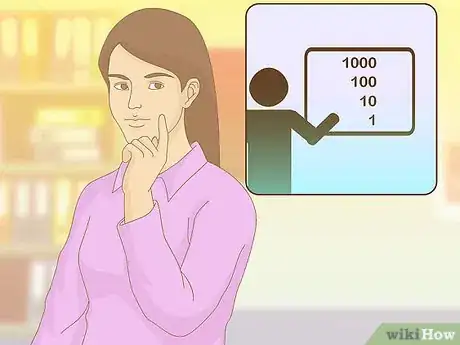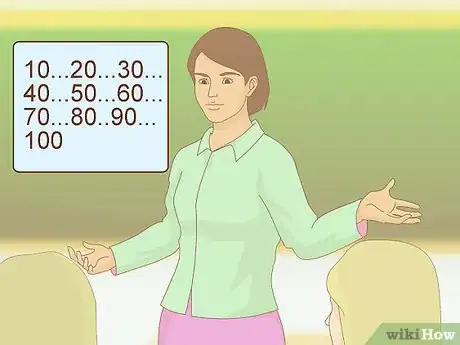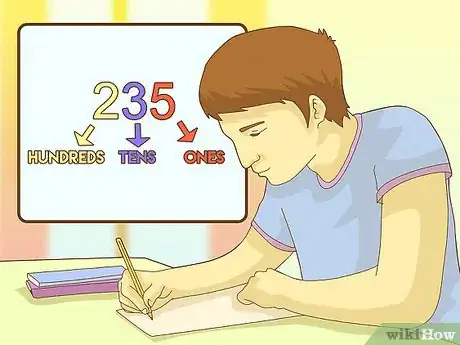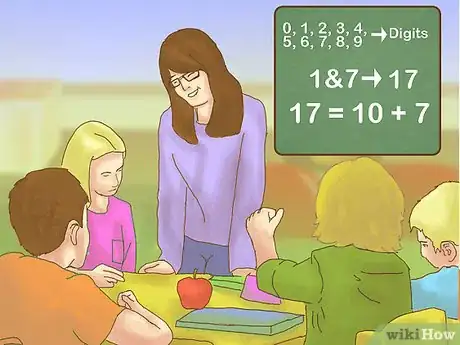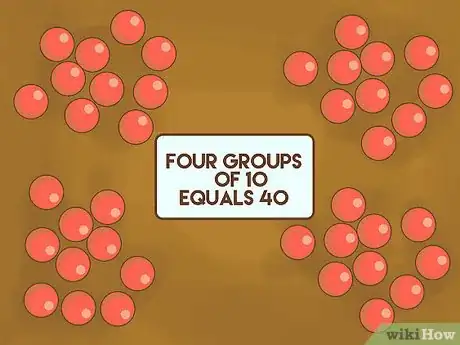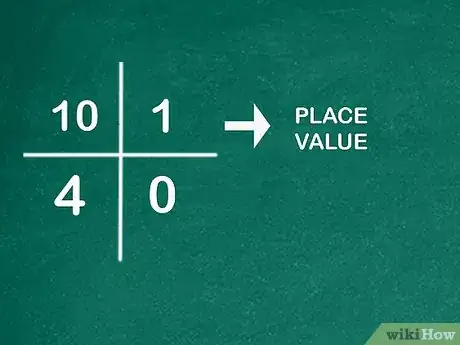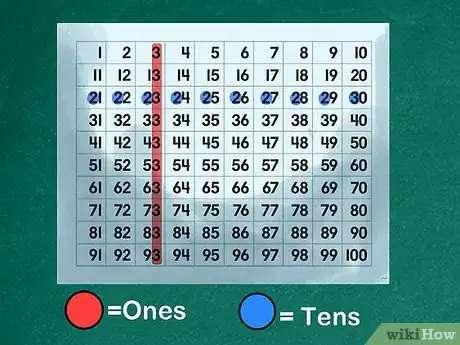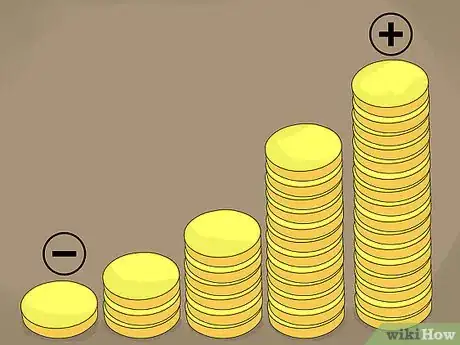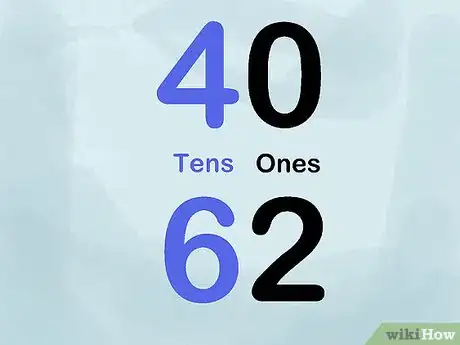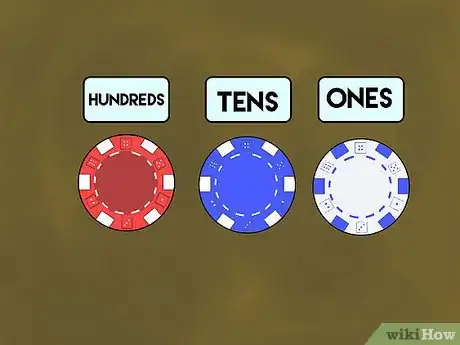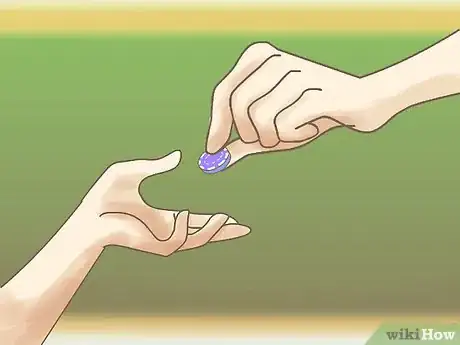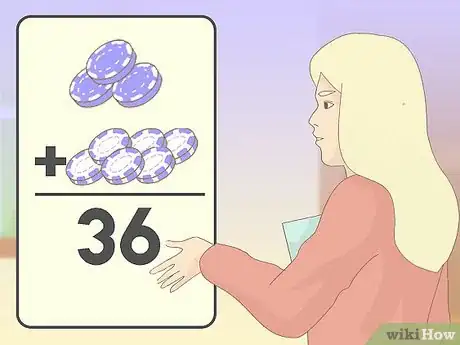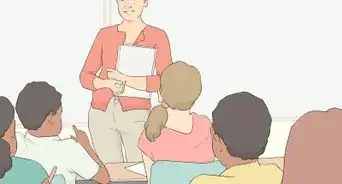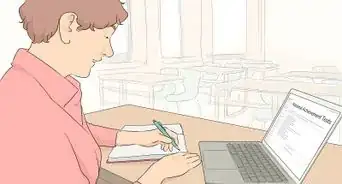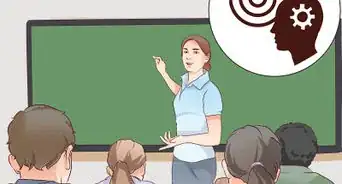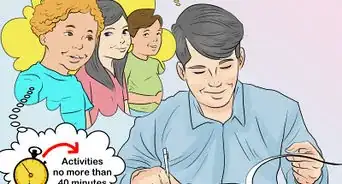wikiHow is a “wiki,” similar to Wikipedia, which means that many of our articles are co-written by multiple authors. To create this article, volunteer authors worked to edit and improve it over time.
There are 12 references cited in this article, which can be found at the bottom of the page.
wikiHow marks an article as reader-approved once it receives enough positive feedback. In this case, 83% of readers who voted found the article helpful, earning it our reader-approved status.
This article has been viewed 197,894 times.
Learn more...
Place value, or the idea that the value of a digit (0-9) depends on its position in a number, is a fundamental concept in math. Because this idea comes so easily to someone who already understands it, it can be tricky to teach. Once your students catch on, though, they’ll be ready and eager to use their new skill and learn about more complicated math concepts.
Steps
Introducing the Basics
-
1Know when to teach place value. If you are teaching within a pre-set curriculum, then you may already have an idea of how place value will fit into the larger scope of your course. If you are tutoring or homeschooling, you are likely working within a more flexible structure. Plan to teach place value shortly after students have learned to count by ones and perform simple addition and subtraction operations – generally around first or second grade.[1] An understanding of place value will lay the foundation for these kids to dive into more complex mathematical concepts.
-
2Introduce the concept of group counting. Most young students have only learned to count numbers by ones: one... two... three... four. This is sufficient for basic addition and subtraction, but it is too basic to give students a strong foundation for understanding more complex functions. Before you teach the kids how to break down large numbers into place values, it may be helpful to teach them how to chunk groups of small numbers together into big numbers.[2]
- Teach your class how to skip-count by twos, threes, fives, and tens. This is an essential concept for students to understand before they learn place value.[3]
- Especially try to establish a strong "sense of ten." Modern western mathematics uses the number ten as a base, so it will be much easier for kids to learn more complex systems if they are used to thinking in this way. Teach your pupils to group numbers instinctively into sets of ten.[4]
Advertisement -
3Review the idea of place value. Give yourself a refresher. Make sure that you fully understand the concept yourself before you try to teach it to a group of young students. Place value, simply put, is the idea that the value of a digit (0-9) depends on its "place" or position in a number.[5]
-
4Explain the difference between numbers and digits. The digits are the basic ten number symbols that make up every number: 0, 1, 2, 3, 4, 5, 6, 7, 8, 9. We combine these digits to form every single other number. A digit can be a number (e.g. the number 7), but only if it is not grouped with another digit. When two or more digits are grouped together, the order of those digits form a larger number.[6]
- Demonstrate that on their own, "1" is the number one and "7" is the number seven. When you put them together, as "17," they form the number seventeen. Similarly, "3" and 5" together make the number thirty-five. Draw several other examples to bring the point home.
Teaching with Visual Examples
-
1Show the kids that it is easier to count in groups of ten. Use 30-40 small, countable, and fairly homogeneous objects: pebbles, marbles, or erasers. Scatter the objects on a table in front of your students. Explain that in modern math, we use the number 10 as a base. Arrange the objects into several groups of then, and count them for the class. Show the students that four groups of 10 pebbles equals 40.[7]
-
2Translate the pebble example into written numbers. Sketch out the concept on a whiteboard. First, draw a basic T-chart, Write the number 1 in the top-right corner of the T-chart. Then, write a 10 in the top-left compartment. Write a 0 in the (right-hand) column labeled "1," and write a 4 in the (left-hand) column labeled "10." Now, explain to the class that each number you made with the pebbles has its own "place."[8]
-
3Use a number board to illustrate the basic place values. Make or print out a "number board" that lays out all of the numbers sequentially from 1-100. Show your students how the numbers from 0 to 9 interact with the numbers from 10 to 100. Explain that every number from 10 to 99 is really made up of two numbers, with one number in the "ones" place and a modifying number in the "tens" place. Show how the number "4" signifies "four" when it is in the "ones" place, but acts as a prefix for the set of "40" when it is located in the "tens" place.[9]
- Illustrate the "ones" place. Direct the class mark or cover up every number that has a "3" in the "ones" place: 3, 13, 23, 33, 43, 53, 63, 73, 83, 93.
- Explain the "tens" place. Have the class point out every number with a "2" in the "tens" place: 20, 21, 22, 23, 24, 25, 26, 27, 28, 29. Explain that the "3" in "23" is stacked on top of the "20" that is signified by the "2." Teach your kids to read the "tens" place as a trigger.
-
4Experiment with other visual teaching tools. You can arrange physical objects or draw on a whiteboard. You can explain place value using increments of money, which students have likely already learned to associate with scaled numerical values. For a fun and interactive exercise, try using the students themselves as the "groups" of values.
- Memory is predominantly visual, and the concept of place value can be abstract until you put it into visual terms.[10] For that matter, numerical symbols themselves can be abstract for young kids! Look for ways to frame group counting and place value so that they come across as simple, tangible, and intuitive.
-
5Use colors. Try using differently-colored chalks or markers to visually demonstrate place value. For instance, write out various numbers using a black marker for the "ones" place and a blue marker for the "tens." Thus, you would write the number 40 with a blue "4" and a black "0." Repeat this trick with a wide range of numbers to show that place value applies across the board.[11]
Using an Interactive Example
-
1Teach with poker chips. First, distribute poker chips to each student. Tell the class that the white poker chips stand for the "ones" place, the blue chips stand for the "tens," and the red poker chips stand for the "hundreds." Then, show the class how to create numbers using place value with your chips. Give them a number (e.g. 7) and place a white chip on the right side of your work table.[12]
- Say another number – for instance, 30. Lay down three blue chips to represent the 3 (in the "tens" place) and zero white chips to represent the 0 (in the "ones" place.)
- You don't strictly need to use poker chips. You can use almost set of objects to represent the three basic value "places," as long as each group (color of chips, etc.) is standard, homogeneous, and easy to recognize.
-
2Have the class trade chips. This is a way to illustrate the way that lower place values make up higher place values. Once the students demonstrate a solid understanding of place value: teach your class how to trade the white "ones" chips for blue "tens" chips, and "tens" chips for red "hundreds" chips. Ask the class, "How many blue chips can I get if I trade 16 white chips? If I trade three blue chips, how many white chips can I get?"
-
3Demonstrate how to add and subtract with the poker chips. You should only approach this concept once the students have mastered the trading of poker chips.[13] It may help to first draw the example of
- For a basic addition problem, direct your students to put three blue chips (tens) and six white chips (ones) together. Ask the class what number this makes. (It's 36!)
- Keep riffing off of the same number. Have your students add five white chips to their number 36. Ask your students what number they now have. (It's 41!) Then, take away one blue chip and ask the students what number they have. (It's 31!)
Community Q&A
-
QuestionWhich place value will change if add 2 to 4888
 Elissa SchwartzCommunity AnswerThe places that would change would be the tens place and the ones place, since 4888 plus 2 = 4890. Therefore, the thousands place remains the same and the hundreds place remains the same.
Elissa SchwartzCommunity AnswerThe places that would change would be the tens place and the ones place, since 4888 plus 2 = 4890. Therefore, the thousands place remains the same and the hundreds place remains the same. -
QuestionWhat is the missing value for this equation 53+39=30+
 Community Answer62. Simply add 53 and 39, and subtract 30. You now have 62.
Community Answer62. Simply add 53 and 39, and subtract 30. You now have 62. -
QuestionHow do I write 4567 in place value?
 Elissa SchwartzCommunity AnswerFour thousand, five hundred, sixty-seven. Meaning four one thousands, five one hundreds, sixty tens and seven ones.
Elissa SchwartzCommunity AnswerFour thousand, five hundred, sixty-seven. Meaning four one thousands, five one hundreds, sixty tens and seven ones.
Warnings
- Slow down if you notice that students are struggling with grouping. Take them back to a more basic place value concept.⧼thumbs_response⧽
References
- ↑ https://www.youtube.com/watch?v=omkDLmfvetk
- ↑ https://www.education.vic.gov.au/school/teachers/teachingresources/discipline/maths/assessment/Pages/lvl2place.aspx
- ↑ https://nrich.maths.org/10769
- ↑ https://nrich.maths.org/10712
- ↑ https://www.mathsisfun.com/definitions/place-value.html
- ↑ https://www.mathsisfun.com/numbers/numbers-numerals-digits.html
- ↑ http://www.homeschoolmath.net/teaching/pv/tens_ones_place_value.php
- ↑ https://intensiveintervention.org/sites/default/files/Place-Value%20Concepts-Considerations.pdf
- ↑ https://intensiveintervention.org/sites/default/files/Place-Value%20Concepts-Considerations.pdf
- ↑ https://www.psychologytoday.com/blog/get-psyched/201207/learning-through-visuals
- ↑ https://www.homeschoolmath.net/teaching/pv/tens_ones_place_value.php
- ↑ https://www.homeschoolmath.net/teaching/pv/tens_ones_place_value.php
- ↑ https://files.eric.ed.gov/fulltext/ED291491.pdf
- ↑ http://mathcentral.uregina.ca/RR/database/RR.09.00/hubbard1/MayanNumerals.html
About This Article
The most effective way to teach place value is by using poker chips as a hands-on tool. Have one chip color represent the 1s place, one as the 10s place, and the third as the 100s place. Show that one chip in the 1’s color and 3 in the 10s color makes 31. Have your students trade chips of equal values, like 10 chips in the 1s color for 1 chip in the 10s color. When they get the hang of it, have them add and subtract with the chips. Keep reading for other strategies to teach place value!
